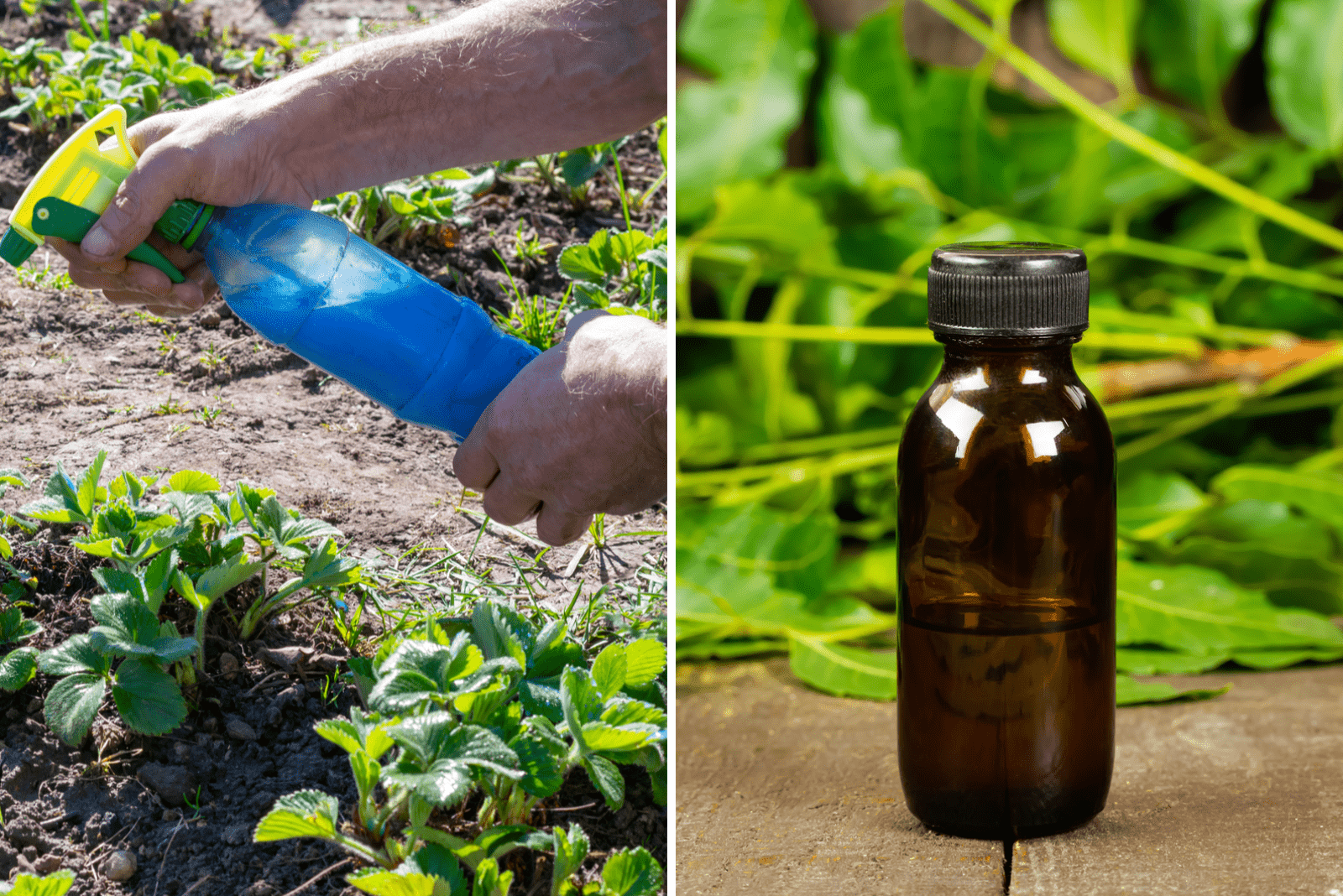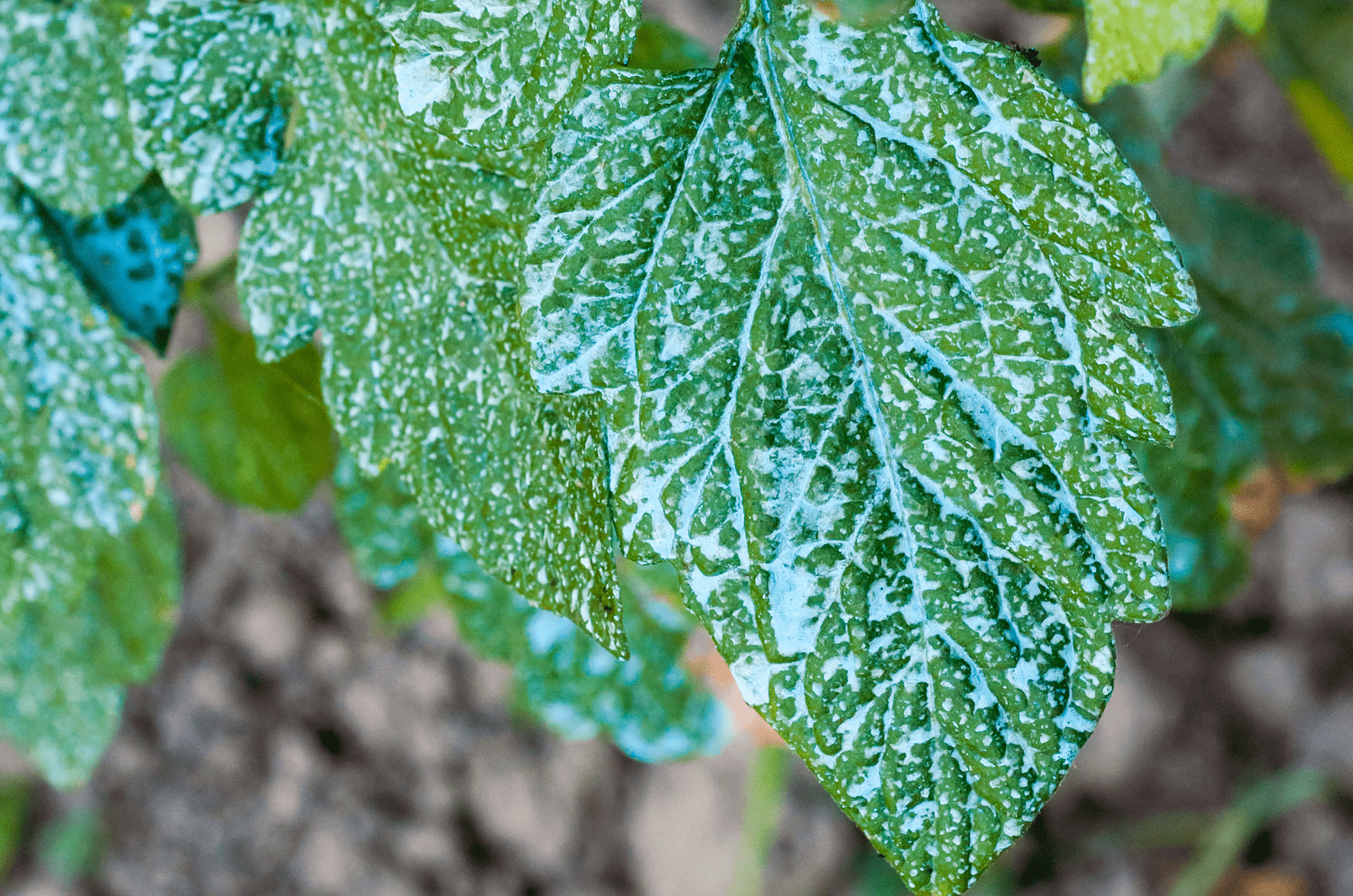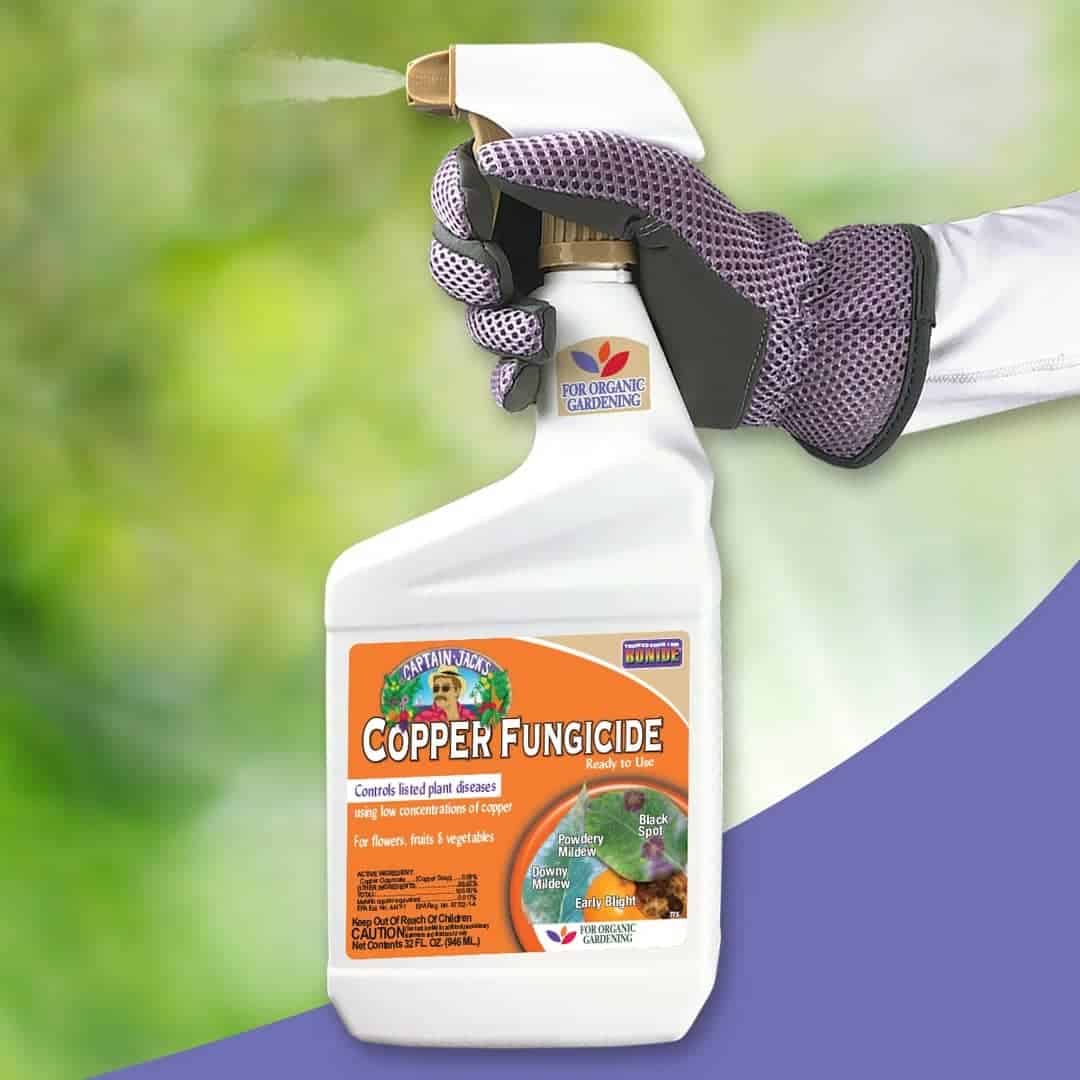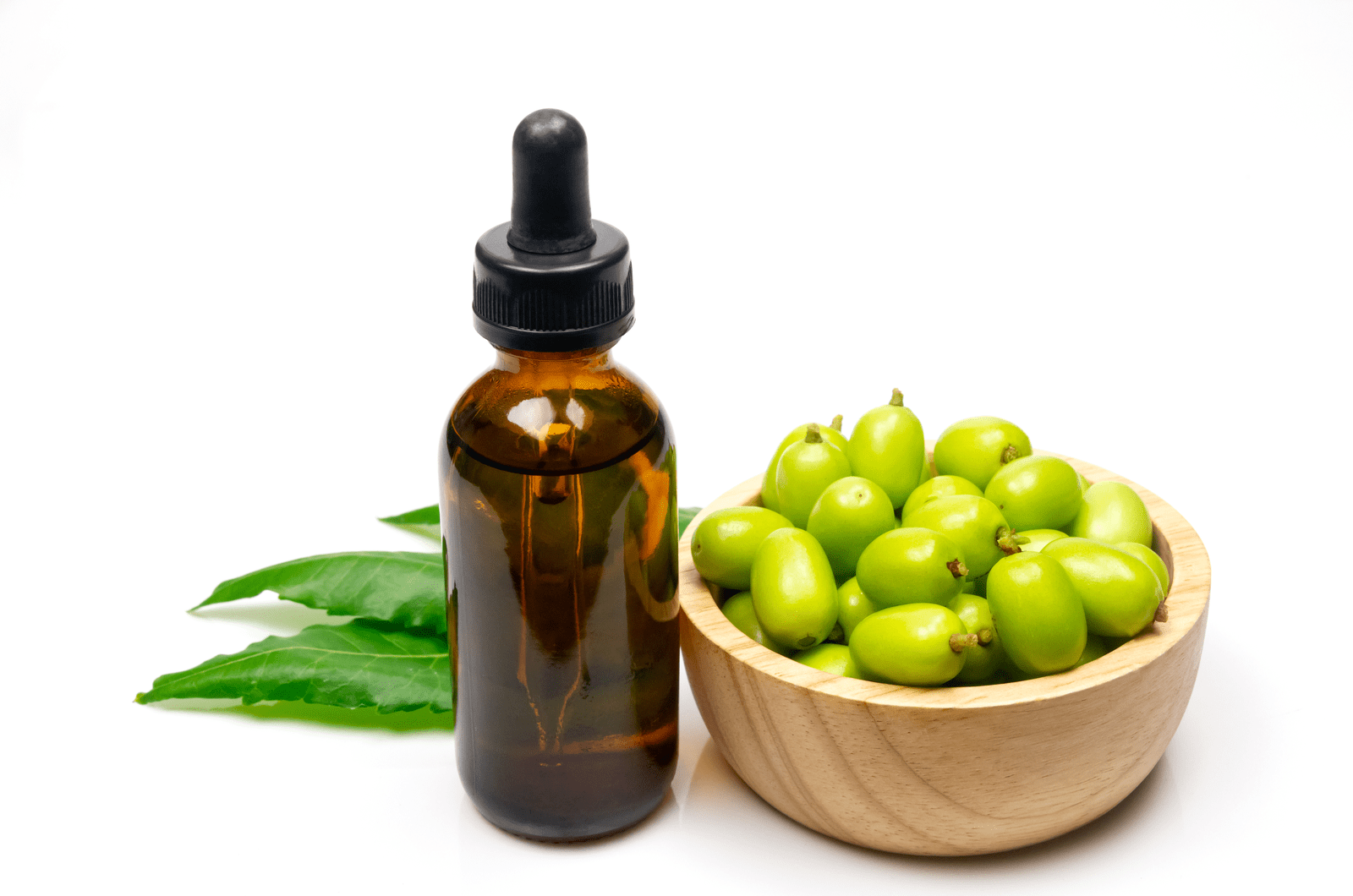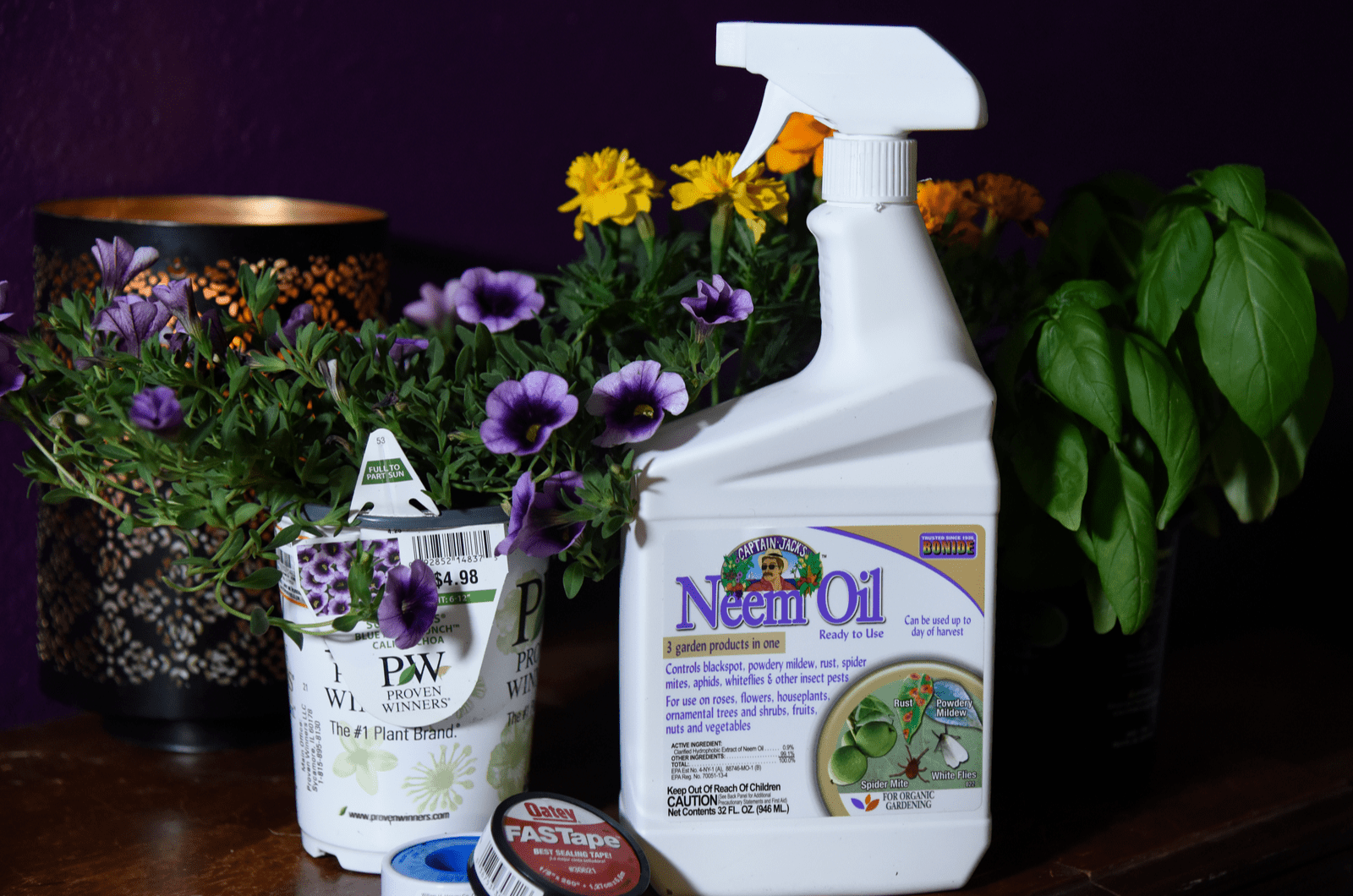If you are a gardener, you are probably constantly fighting pests and fungi in your garden, much like many others.
Some gardeners consider pesticides to be the most effective option for getting rid of these annoyances, while others tend to go in a different direction and use organic pest and fungi repellents.
Whatever option you choose, it’s totally up to you!
If you have chosen to go organic, then you should look at our thorough analysis on copper fungicide vs neem oil to help you decide which of these is the better option!
Copper Fungicide Vs Neem Oil: Which Is Better?
You can tell from the name “copper fungicide” that it is primarily used to fight fungal diseases, while neem oil can be used to fight both pests and fungus. Therefore, neem oil has a wider spectrum of applications.
Both of these function in a different manner. For instance, copper fungicide has a somewhat quicker response as it penetrates deeply into plant tissue.
Neem oil first has to be ingested by pests to get rid of them, while copper fungicide can kill pathogens before they start multiplying, which is why this type of fungicide is used as a preventative measure.
On the other hand, neem oil is more versatile and can be used for different things. Have a pest infestation? Use neem oil. Have a fungus infection? Use neem oil. You need extra fertilization? Use neem oil.
It seems like this is the answer to all of your gardening problems!
As well as this, I would like to mention that copper is not biodegradable, which means that it will eventually contaminate your soil. Both of these can improve your soil content, however, after some time the copper will start building up in the soil.
Neem oil is biodegradable and it won’t lead to any chemical or residue build-up in the soil.
I think it’s best to use copper fungicide from time to time to prevent fungal infection, but if it does occur I recommend you use neem oil because it is a more effective and safe option!
All You Need To Know About Copper Fungicide
Now we are going into more detail about both of these options.
Let’s start with copper fungicide!
What Is Copper Fungicide?
As the name suggests, copper fungicide is a type of pest control that uses metal copper dissolved with water or some other compound to protect plants from getting infected by fungi that can disrupt normal growth and development.
The most commonly used copper fungicide is copper sulfate. It is useful because when sulfuric acid and copper mix they create a reaction that is able to denature enzymes. These enzymes are crucial proteins in pathogens, and without them the pathogens die.
Copper fungicide is usually sprayed all over the plants, and primarily on the plants’ leaves. The copper will penetrate deep into the plant tissue and protect it from any possible fungal infections.
Copper fungicide is used as a preventative measure rather than for dealing with an already infected plant. Some of the possible fungal infections that copper fungicide can prevent include:
• Powdery mildew
• Downey mildew
• Fire blight
• Anthracnose
• Septorial leafspot
• Black spot
These types of fungi are attracted to high humidity, which is why you should apply copper fungicide before the change in season when humidity levels are high!
Remember that this is a type of preventative fungicide and cannot be used as a treatment, so don’t apply it when it is too late!
I use a liquid copper fungicide once the humidity levels start increasing by spraying it all over wet leaves. First make sure that the weather is going to be dry for the next 12 hours. You can also look for a bordeaux mixture, which is basically copper mixed with lime and is supposed to reduce plant damage.
Is It Safe For All Plants?
When you follow the instructions correctly, every product is safe to use. I mean, even eating a lot of vitamins can cause hypervitaminosis!
As copper is an active ingredient, using it in large amounts can lead to phytotoxicity. Phytotoxicity will result in a delay in seed germination, plant growth suppression, and many other unfavorable effects on plants produced by specific compounds (phytotoxins) or growing conditions.
However, it can improve the flavor and juiciness of the fruit if it is used in the right amounts!
You can also harm your plants by using a surfactant, which is a compound that can help the fungicide spread on the leaves and make your plant more prone to injuries.
Another thing that you should consider is the weather. Once the copper fungicide has been applied it will require at least 12 hours to completely dry. If your weather app is showing rain for the next few days, postpone applying this fungicide.
How To Use Copper Fungicide
As we already mentioned, when dealing with any type of pest control, the best thing is to follow the instructions written on the packaging.
Copper fungicide is applied like any other fungicide, there are no secret tips and tricks on how to use it. All you have to do is add one to three teaspoons of fungicide per gallon of water, mix it all together, and pour it into a spray bottle.
Once you’ve made the mixture, spray it all over your plant’s leaves. It is always recommended that the leaves should be wet before applying this fungicide because the copper ions will be able to penetrate more deeply and denature the enzymes.
You should wait at least seven days before reapplying the copper fungicide to avoid copper build-up and phytotoxicity.
Bear in mind that you should avoid applying it on hot days. Applying copper fungicide to your plants during hot weather or while bees are active near the plants is also a bad idea.
You should use it when the weather is cool, preferably early in the morning or late in the evening. This is to guarantee that you don’t use it when beneficial animals such as bees and butterflies are around because it could possibly harm them.
Remember that copper fungicide should be applied before a fungal infection occurs. It works best as a preventative measurement, and there is basically no point in applying it to an already infected plant. In this case, I would suggest you try and use some other types of fungicide or neem oil.
Copper Fungicide Pros
• It is one of the top choices for fungal disease control. Copper fungicide works as a preventative measure and can protect your plant from potential fungal diseases such as Fire blight, Anthracnose, Powdery and Downy mildew, Black spot, etc.
• It can also be used as a fertilizer in copper-deficient soil to encourage growth and development.
• Copper fungicide can improve the flavor and juiciness of the fruit, but only when it is used in appropriate amounts.
Copper Fungicide Cons
• It is only used as a preventative measure and cannot be used as a treatment — that is, once the plant disease has already occurred a copper fungicide cannot be used to treat it.
• If you apply too much copper fungicide it can cause phytotoxicity in plants. Excessive use can kill the cells in plant tissue, leading to dried leaves.
• It is also toxic to animals and humans. If your pet accidentally eats some of the leaves that copper fungicide has been applied to, it could have some health issues such as stomach aches.
• As it is toxic to insects, many beneficial insects and pollinators can be damaged by copper fungicide as well.
• Copper fungicide is not biodegradable, which means that it can build up in the soil if it is not properly washed away. Excess amounts of it in the soil can kill good bacteria and reduce seed germination. It’s also extremely difficult to get rid of excess amounts of copper from the soil.
• Although it can boost fruit production and flavor, if it is applied too often it can affect the flavor and leave you with tasteless fruit.
The Best Types Of Copper Fungicide
Photo from: @bonideproducts
Luckily, we are here to help you!
Let’s take a look at some of the best copper fungicides.
1. Monterey Liquid Copper Fungicide
You won’t have to worry about mixing the right amount of fungicide and water with this one, as it all comes already diluted in the sprayer!
Therefore, you can immediately apply it to plants and fruit trees without even prepping it beforehand. You can use it as a preventative dormant spray or apply it during the growing season to various fruits and vegetables.
It can help to prevent many of the diseases we have already mentioned, including peach leaf curl and fruit rot.
2. Bonide Copper Fungicide
This is another liquid copper fungicide, and the only thing that’s different is that it’s made of copper soap, which means that you will have to mix it with water.
However, you can use it immediately with a hose or a sprayer because it can instantly mix with water.
It can be used throughout the growing season right up until harvesting because it is effective at preventing late blight disease.
If you prefer, you can also buy this as a dust product. Just mix it with water and make it as concentrated as you wish (keep in mind that you should not use an excessive amount or it could harm the plants). Just follow the instructions and you will be good to go!
3. Southern Ag Liquid Copper Fungicide
The last one is also, you guessed it, a liquid copper fungicide!
This Southern Ag fungicide contains about 27% copper diammonium diacetate, which indicates that it is extremely effective against strong fungal diseases like mildew, fire blight, or rust.
This fungicide can also be used to kill moss on tarmac or oak trees, as well as for annoying algae on lawns.
Bear in mind that you should mix it with water before spraying it all over your plants. Again, please follow the instructions on the packaging to avoid harming your plants!
Everything You Need To Know About Neem Oil
If you have been practicing organic gardening, then you are probably familiar with neem oil. Either way, we are going to cover the basics to help you choose the best option to fight off that annoying fungi!
What Is Neem Oil?
Neem oil is probably the most commonly used organic pesticide out there. It is produced from the seeds of the neem tree, also known as Azadirachta Indica. Neem oil contains a substance known as Azadirachtin, which works kind of like a natural insecticide and miticide that is capable of killing annoying pests and insects that invade your plants.
When the insects ingest the neem oil it inhibits their growth and further development, especially in the larvae stage, and also prevents them from feeding on plants. Eventually, they will die.
The oil spray usually comes in a yellow or brown color and has a strong, garlic-like scent.
A great thing about neem oil is its non-toxicity — you can safely use it around bees, birds, and many beneficial insects or animals for that matter.
It’s easily absorbed by plants and can work as a pesticide and fungicide at the same time!
Here are some of the diseases and pests for which neem oil can be used as a treatment:
• Mites
• Aphids
• Rust
• Late blight
• Tip blight
• Whiteflies
• Black spot
• Root rot
• Mildew
• Anthracnose
The list goes on and on!
Similarly to copper fungicide, neem oil can also be used as a fertilizer because it contains high amounts of nitrogen, potassium, and phosphorus — the three famous components of almost every fertilizer ever!
Not only is it good for improving plant growth and development, it can also be used to improve soil content and feed various soil microorganisms important for soil aeration and organic matter.
Did you know that neem oil has numerous health benefits? For more information, check out this video:
Is Neem Oil Safe For All Plants?
As we previously mentioned, neem oil is not toxic, which means you can apply it regularly until the day of harvesting.
However, I would suggest you be careful with this horticultural oil because it can cause skin rashes when undiluted. You should also wash fruit before eating it if you have used neem oil.
Another great thing about neem oil is that it is biodegradable, which means that it won’t lead to any toxic chemical buildup in the soil that could possibly harm the plant and organisms beneath the surface.
How To Use Neem Oil
Using neem oil is quite similar to copper fungicide. It is important that you don’t use large amounts of it because it could possibly kill your plants.
You should always use neem oil on a few plants first as a sort of test to make sure that there are no negative reactions to it.
Neem oil should be applied early in the morning or in the evening when temperatures are lower. Never apply neem oil on a hot summer day when temperatures are high.
Even though we already said that neem oil is not toxic or harmful to beneficial insects, it would still be a good idea to stop using it if the numbers of pollinators or beneficial insects in your area are low.
Remember, always check the packaging first!
By following the instructions displayed on the packaging you will know how much water is needed to dilute the oil and when you are supposed to use it.
It is hard to tell what the water to oil ratio is because it varies from product to product. The last time I used it I mixed two teaspoons per gallon of water. It’s best if you spray the oil rather than coat the leaves, though this is optional.
I would suggest you apply this organic pesticide once a week, but if the instructions say otherwise then follow them!
Neem oil will keep your plants safe and sound, and at the same time deal with any type of pests and fungi issues.
Neem Oil Pros
• It is biodegradable, which means that it won’t contaminate the soil when decomposing. With neem oil, there is no harmful chemical buildup that kills plant roots and microorganisms in the soil!
• It is a fungicide, pesticide, and miticide all in one, which means that it is capable of killing pests, insects, and fungi. This versatile feature makes it unique in organic gardening pest control.
• Neem oil is not toxic and won’t harm your plants or any beneficial insects and pollinators, but it will affect any critters munching leaves!
• It also contains all the necessary nutrients that make a great fertilizer. Potassium and nitrogen found in neem oil can improve your plant’s growth and development, as well as the organic matter in the soil.
• When it decomposes it is capable of killing nematodes and their larvae beneath the surface. These annoyances feed on your plant’s roots, which can completely destroy the plant.
• Can be applied throughout the growing season, just make sure that you follow the manufacturer’s instructions.
Neem Oil Cons
• It can cause rashes if it comes into direct contact with the skin — especially when it isn’t diluted.
• It is effective mostly on pests and insects that munch on the plant’s leaves because they need to ingest it in order for the neem oil to work. Though it is quite successful at stopping fungal infections from spreading.
• Sometimes it can clog the cuticles, which can basically suffocate the leaves due to its thick consistency. If you use too much neem oil during the summer you will probably be left with fried leaves.
Frequently Asked Questions
1. Can I use neem oil as a fungicide?
Neem oil can be used as fungicide, pesticide, and miticide all at once! It contains a substance known as Azadirachtin, which works kind of like a natural insecticide and miticide capable of killing annoying pests and insects that invade your plants, and also to prevent fungi from spreading.
2. What is the difference between copper fungicide and neem oil?
Copper fungicide and neem oil differ from one another primarily in their functions. For instance, copper fungicide is used as a preventative measure, while neem oil can be used as a treatment after your plant has already been affected by fungal diseases.
Both can be used as fertilizers, however, neem oil contains the balanced necessary nutrients required for plant growth and development, and also improves soil content and microorganisms.
As it decomposes, there isn’t any contamination or chemical buildup like with copper fungicide degradation, which often contaminates the soil with excess copper.
3. Is neem oil or copper fungicide better?
Neem oil is definitely better for many reasons. First, it isn’t toxic and there isn’t contamination of the soil or any danger of harming beneficial insects and birds. It also works as a pesticide and fungicide at the same time, focusing on both pests and fungi, while copper fungicide can only be used for preventing fungicide.
Neem oil also works better as a fertilizer, and it can boost up the organic matter in the soil and encourage further growth and development of your plants.
To Sum Up
After our thorough analysis on copper fungicide vs neem oil, I hope that you got the bigger picture and found some useful information to help you decide.
Whichever option you choose, I’m sure that it will keep those annoying fungi away from your garden and plants!
Just make sure that you are following the manufacturer’s instructions and not applying too much of either because excessive amounts of any kind of fungicide is never a good thing for your plants.
Keep your plants safe and sound!

